
|
||
|
Issue 43 |
|
12 June 2006 |
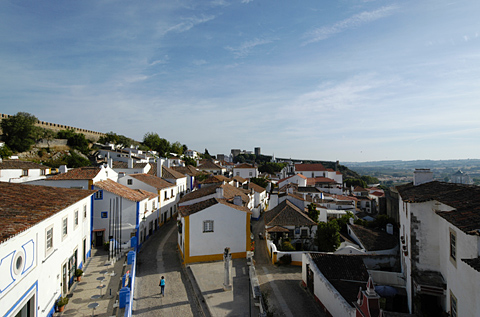 Obidos, Portugal Walled medieval city All photographs ©2006 J.Crawford Announcements
10th AnniversaryCarfree.com (including its predecessor sites) celebrated its 10th anniversary this spring. We're hoping that the next ten years will be as productive as the past ten. Web site traffic now runs above 5500 pages and 400 MB a day. When the site had been on line for six months, traffic was under 200 pages and 2 MB a day. Carfree days around the world have risen from none a year to more than can be counted, but certainly over 1500. We do still have a long way to go.Support for Carfree.comMichael Hoag of Village At donated money to keep Carfree.com on line for nearly a year, from June 2006 through March 2007. Two anonymous donors paid for April and May 2007. Bernard Delloye paid for hosting in June 2007. Thanks to all our contributors for their generosity. Please see the Support Page if you can consider making a contribution.Carfree Times in GermanThanks to the tireless work of Ulrich Nehls, Carfree Times has been available in German since issue #32 (September 2003). The German-language index is at http://rzsunhome.rrze.uni-erlangen.de/~thze00wm/cft.html. The German edition is usually available about a month after the English edition; a link to the German edition is added near the top of the English edition when the German text is available.Carfree Design ManualThe field test of user-design (in this issue) at Letnany in Prague revealed some weaknesses in the methods I had developed in Part IV of the new book. I will be reworking the entire Part to reflect the lessons gained from the experience.Carfree Cities AvailabilityBoth the paperback and hardcover editions of Carfree Cities are widely available. For details, see the Ordering Information page.ThanksThanks to the many stringers who have forwarded stories to Carfree Times. I've stopped naming people for fear of slighting someone by overlooking a name.
Carfree.com supports World Carfree Network (WCN) generally and in particular by posting the most important
network announcements here. Visit the WCN web site for full information
regarding the network's activities.
|
|
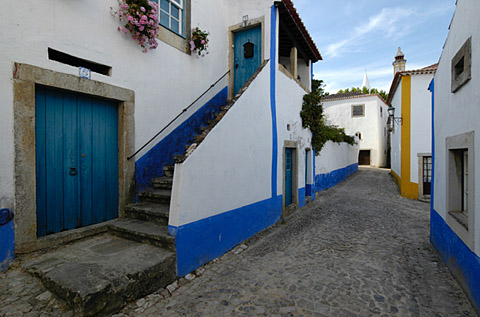 A Walk in ObidosThe photographs scattered throughout this issue were taken recently in the medieval Portuguese walled city of Obidos, about 100 kilometers north of Lisbon. This small city, perched on a steep ridge, has been fastidiously maintained. It has attracted many tourists who support the local artisans and shops.The town is not completely carfree, although there are very few cars in evidence. Only residents are allowed to drive into the city. The peace is only broken by a highway about a kilometer distant. I have studied Obidos since I first visited it almost ten years ago. It is a casebook example of a city that was designed in response to the opportunities and constraints of the site. The resultant city has its own internal logic, as you will see. This is, I believe, a central principle of city design, and the one that I am advocating in Carfree Design Manual.
News Bits Raising Density, a LotAt MetroWest in Vienna, Virginia, in the USA, 64 single-family home owners on 60 acres sold their houses. The site will be redeveloped with 2250 residences, 300,000 square feet (roughly 30,000 square meters) of office space, and 100,000 square feet (10,000 square meters) of retail space. The site is located adjacent to a Washington, D.C. metro station providing excellent service to downtown.The greater density is expect to reduce peak-hour per-capita car trips by 47% and 25% for residences and offices respectively. A real town center with a public square will be created, and parks are included. Support for the initiative in car-choked Washington appears to have been widespread.
"When 2250 homes replace 64..."
|
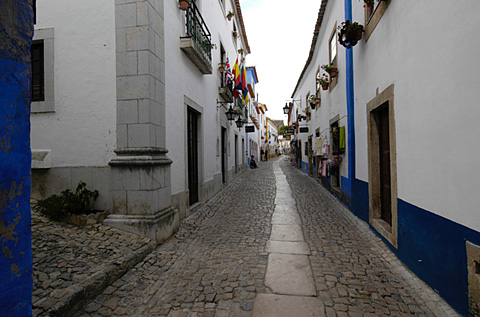 Fixing Shanty TownsJennifer Rowell is the urban adviser for Care International. She recently said:Every second, someone in the world moves into a slum. Over the next 30 years, the world's slum population will, on average, increase by 100,000 each day. Globally, we are seeing a shift from rural areas to cities....Many of the new urban dwellers are living in appalling conditions in one of the world's many shanty towns. In most cases, air and water are highly polluted (and water may be scarce). Often, these informal settlements arise adjacent to expensive tower blocks that may provide conditions only a little better: Jonathan Watts's article about the growth of a megalopolis in China rightly illustrates some of the startling effects of rapid urbanization. Watts's picture of a teeming city, smothered in dense pollution and crowded with tower blocks and shopping malls incongruously overlooking slum huts mirrors what I saw on a recent trip to Dhaka, in Bangladesh - and what I have seen in many cities around the world, from Luanda to Mumbai, and Puerto Suarez in Bolivia.In the shanty towns, most housing is only a single story. The streets are extremely narrow and crowded with throngs of people living in tiny dwellings and even on the street. Sanitation is unknown, and human and solid waste accumulate. People become ill in the terrible conditions. Jobs are scarce, and people may be thrown off the land at any time. Emergency services cannot penetrate the dense maze, and these neighborhoods, built of flimsy and flammable materials, are a tinderbox. We know from our work in cities around the world that the massive impact of rapid urbanization can only be dealt with when we address the disenfranchisement of the urban poor and generate the political will from city leaders to put resources into poor areas.Of course, carfree cities, by building just a couple of stories higher, can provide plenty of room for everyone and streets wide enough for emergencies. The technology is simple, and there is no reason that much of the work cannot be done by the people who will live there, including even the construction of proper sewer and water systems. The governments need only come up with the money for some of the materials and the vision to see the opportunity to improve the lives of millions of their citizens, and so the wealth (in all terms) of their nations.
"The Slums in the World's Teeming Cities Need an Urgent Solution
|
 Prince Charles Gets TractionBrits are tired of cities that are not places for people but places for cars. No one is more tired of this than Prince Charles. He's tired of cities abandoned to road enlargement schemes. He's tired of places that all look the same, wherever you may be in the UK.The Prince's Foundation for the Built Environment promotes traditional building design. The Lincoln City Council asked the foundation to draw up a 30-year plan for renewing the city. Based on sustainability principles, the plan identifies 20 separate building projects that will restore the web of connections in the city and create lively streets and public spaces. It is really about organic town planning that has as a goal better pedestrian routes, improved public transport, and lively public spaces. The plan also helps to restore a clear sense of local identity. Hank Dittmar, a former adviser to President Clinton, said, "For the past 40 years or so, cities have been seen as machines for moving around people, usually in cars." He wants to reverse the trend and get rid of the "typical, inward-facing 1960s shopping blocks, with very tired buildings" all built in the same faceless style. Public safety is a major concern. This requires eliminating abandoned, unpopulated concrete spaces and returning to the small-scale design that makes people comfortable. Most places always had their own character, which was nearly always at a comfortable scale. All that is needed is to return to the local styles and materials that were widely used until recent times. Prince Charles has long been the subject of ridicule by the architectural profession, but his ideas struck a chord with the British people. Lincoln's adoption of the Prince's Foundation plan shows that his ideas are becoming mainstream - the Council seems confident of public support and private funding. He recently said that people in towns and cities "instinctively understand that we need to learn again how to make walk-able, liveable, well-mannered, beautiful, places" where it doesn't take two litres of petrol to buy one litre of milk.
"Blue prince for cities"
|
 Even Petrolheads Are ImpressedThe British paper The Telegraph recently carried an article with the headline: "New, car-free developments are catching on fast. Even petrolhead Oliver Bennett is impressed." Now it's my turn to be impressed. The article says in part:... a new generation of homeowners [is] being lured away from their cars. It's a fast-growing trend. There are already quite a few developments - mostly urban new-builds - that aim to diminish car use among their residents, if not to phase it out entirely. Philip Igoe, of the charity Carplus, an information centre for car clubs and lift sharing, says that property developers are finding it the vital key to gaining planning consent. "Residential developments have to have a travel plan, and are finding that the fewer parking spaces they include, the more likely they are to get permission," he says. "It's particularly the case with city-centre and waterfront developments."Now, isn't that interesting! In fact, the London Borough of Camden has established about 400 agreements stipulating that there will be "no resident parking permits available for the occupants of the units." The agreements cover some 3,500 dwellings. Wilf Parsons of Car Free Developments says that cars are being eliminated at a dizzying rate. "It's the Section 106 agreements," referring to the planning code section that allows a development permit to carry the proviso that cars not be allowed. "They're catching on all over the place, from Brighton, Bristol and Portsmouth to Edinburgh and Leeds." Some projects costing £400,000 (about $700,000) per dwelling are included. Car-sharing is part of most projects, so many of their residents still make occasional use of a car. The Section 106 provision is backed by the Department for Transport, which requests that "planning applications with significant transport implications should be accompanied by a travel plan. This applies to residential developments as well as workplace, and includes any new development or redevelopment which requires planning permission." Igoe claims to be "frantic" with calls from local authorities and developers looking to reduce car use. The 1980s-style "executive estate" with its twin parking spaces is seen as archaic and unsustainable. And people don't seem to be missing their cars as much as they had expected. The conclusion: Indeed, one wonders if the cities of the future will allow private cars at all. It is hard to find an urban planner who still advocates car use. One of the most influential planning movements, the New Urbanism, aims to rewrite the nature of urban and suburban communities, with one of its planks being the car-free development: the better to tackle obesity, attract small local shops to areas that rely on driving to ring-road retail sheds - even to encourage fraternisation among neighbours. It's all part of the new social engineering.That's actually the first I've heard of "car-free development" being one of the planks of the New Urbanism, but if the New Urbanists have shifted from car-lite to carfree, I don't mind a bit.
"The fond farewells to four wheels
|
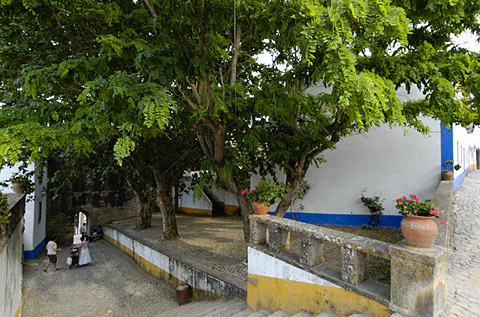 Are Cars Killing the Planet?The Economist debate at the Hay Festival this year asked the question "are cars killing the planet?" Jeremy Leggett argued that they are. The carbon arithmetic simply allows no other conclusion:We have already turned the global thermostat up by 0.8 degrees from the pre-industrial average. The EU has adopted a target of not going above the 2 degree mark: 1.2 degrees to go, in other words. To have a decent chance of staying below 2 degrees, we can "afford" to emit no more than 400 billion tonnes of carbon, and probably much less.There are, however, some 700 giga-tonnes of carbon (GtC) in oil reserves and easily accessible unconventional oil. There are at least 500 GtC in extractable gas, and a whopping 3500 GtC of coal. So, we have fossil fuels for our suicide machine in a supply more than 10 times the lethal limit. What are the alternatives? The first involves America, guzzler of 20 of the world's daily 84 million barrels of oil consumed. 12 of these 20 are imported, five of them from the Gulf. In a recent study, part funded by the Pentagon no less, a group of American energy-efficiency gurus concluded that all the oil the United States now uses could be displaced for less capital outlay than it would take to buy that oil. [read that again!] To replace oil use with cheaper alternatives in this way, the US would have to invest $180 billion over the next decade, for which the return would be $130 billion in annual savings by 2025. There are four steps to this particular feasible utopia.According to Leggett, the USA must:
Leggett therefore concludes that we could cut oil use dramatically, if we but had the will. Most interesting, however, is his insight that emissions are closely related to the character of the built environment. Buildings and cars are related, in terms of design. Today, the suburbs spread inexorably, and car use grows with them....But then you already knew that. And he's this close to carfree cities. Go, Jeremy, go! You can do it!
"Designing ourselves to death"
|
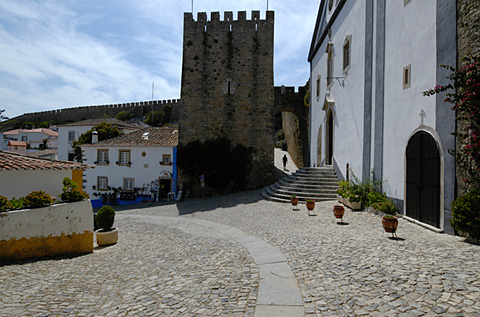 Grass-Roots Sustainability in CuritibaCuritiba is a provincial city in southern Brazil, where sustainable development is not given lip service, but actually practiced. Local people really are involved in planning decisions. Its path-breaking former mayor, Jaime Lerner, says, "Credit cards give us goods quickly, the fax machine gives us the message quickly - the only thing left in our Stone Age is central governments." He has spent years trying, with considerable success, to change that.He is that rarity in local government: a visionary. After his 12 years as mayor, his successors elected to sustain and expand his vision. The secret of successful town design is not centralized planning but organic designs arising from the people themselves. In Curitiba, wide-ranging public debate and discussion and broad participation were employed to reach consensus. And the best ideas and implementation came from the citizens. Once consensus is reached, solutions are rapidly and easily implemented. The results have been exceptional. Myriads of small, multi-purpose projects have been implemented. These are cost-effective, people-centered, fast, simple, home grown, and based on local initiatives and skills. When people, especially children, are regarded not as a burden, a nuisance, and a bunch of troublemakers, but as its most precious resource, the path to the future is easily found. One of the key successes in Curitiba is the integrated bus transport system. Curitiba was the first city to implement bus rapid transit (BRT), which has now spread to a number of other cities in South America. At peak times, there is a bus a minute. The service is relatively inexpensive and the fare fully covers costs. When the bus routes were in planning, the city bought up the adjacent land to prevent speculators from pocketing the profits arising from public expenditures. The bus stations are connected to 150 kilometers (nearly 100 miles) of bike paths. The result is that despite an unusually high level of car ownership for Brazil, people use their cars less than in other cities. Two-thirds of all trips in the city are made by bus. Car traffic has declined by 30% percent since 1974, at the same time that the population doubled. The BRT lanes carry a remarkable 20,000 passengers per hour. The system carries three-quarters of all commuters, some 1.9 million weekday passengers. The city has been arranged to work with, not against, nature. Waterways and lowlands prone to flooding were made into parks. One-sixth of the city is woodland. Public open space has grown faster than the population; in fact per-capita public space increased 100-fold. A municipal shepherd and a flock of sheep crop grass in the parks, making the grass a resource, not an expense. A 1989 initiative, Garbage That Isn't Garbage, recognized that waste has value. Today, 70% of households sort their wastes for curbside collection. Two-thirds of the bagged and separated waste are recovered and sold, offsetting the cost of collection and disposal. Curitiba did not achieve its successes because of any great inherent advantage. In 1980, its per-capita GDP was only 10% above the average for Brazil. By 1996 it had risen to 65%. Today, companies are attracted to Curitiba because of the pleasant environment, lack of congestion, and ease of commuting. Curitiba's poor are better off because the cost of living is low and benefits are effectively targeted to those who need them most. The important principle enumerated in Curitiba in 1971 was: respect the citizen-owner of public assets and services, both because people deserve respect and because Lerner insisted: "if people feel respected, they will assume the responsibility to help others." Top-down systems have not worked. We must put citizens in charge of running their cities, as they once were in Athens. Sustainability requires this.
"Curitiba - Designing a sustainable city"
|
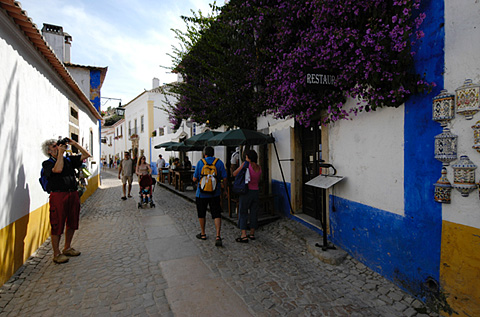 Most Japanese Favor Environmental TaxA large majority (78%) of Japanese public favor an environmental tax on fossil fuels to fight global warming. Japanese citizens favor an anti-global warming tax base on the amount of CO2 emitted. When a monthly tax equal to the cost of a cup of coffee was mentioned, a similar large majority supported the measure. The survey claimed that this level of taxation could support the improvement of 5.2 million hectares of forest over four years. Alternatively, the tax would support the addition each year of 500,000 solar power plants, 1820 wind generators, 900,000 eco-friendly houses, 33,000 eco-friendly buildings, or 35,000 low emission vehicles.Once again, people are out in front of their politicians on these issues. The problem is even more acute in the USA, I believe, where the sleeping Democrats still seem to think that the road to success is aping the predations of the Bush administration. They will learn...eventually.
"78% of Japanese Favor Introduction of an Environmental Tax"
|
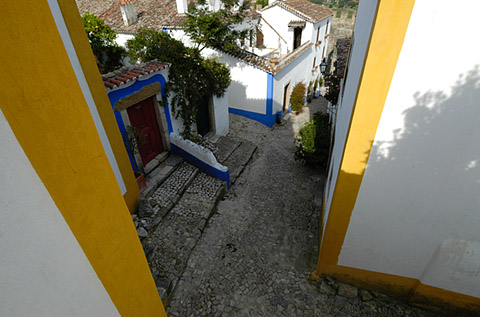 Fuel Cells Find a Good UseJapan is to build a test train partially powered by fuel cells in an effort to determine the feasibility of this source of power for railways. East Japan Railways will soon begin test runs of the new train, with the goal of operating it in regular service by mid-2007.The prototype train consists of a single car powered by electric batteries and capable of traveling at up to 100 km/hr. Two 65-kilowatt hydrogen fuel cells will provide about one-third of the power required. A generator will provide the rest. Railroads are a difficult environment because of the high levels of vibration, so a test of this kind is very wise. The train is expected to consume about 20% less energy than conventional trains. Presumably, if the pilot project succeeds, trials will be conducted with a 100% fuel-cell powered prototype. If this technology proves feasible, it is a huge advance for railroads. The very expensive and terribly ugly overhead power supply systems could simply be eliminated. On-board power generation, using clean fuel cells provides an ideal alternative. Let's hope this works!
"Japan to build 'world's first' fuel cell-powered train" [registration required]
|
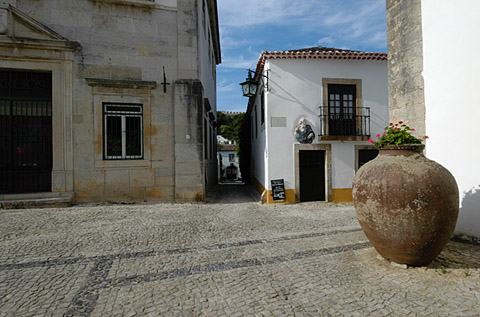 Peak Oil Hits San FranciscoSan Francisco recently became the first US city to pass a resolution acknowledging the threats posed by peak oil. The city is urging the development of a comprehensive plan to respond to the threat posed by peak oil.The resolution won unanimous support of the Board of Supervisors. It cites the Hirsch Report, a study commissioned by the US Department of Energy, which concluded that action is required to avert a crisis in fuel supplies. The measure comes in the wake of a grass-roots campaign that targeted Bay Area elected officials for two years. San Francisco was already a leader in reducing energy consumption. A year-long study by Sustainlane.com concluded that San Francisco is the US city third best able to cope with an energy crisis. Michael Poremba, spokesman for SF Informatics, congratulated the Supervisors on their action. "We are thrilled to see the city finally acknowledging the peak oil issue," he said. "Our society runs on oil, our economy runs on oil, and farsighted local governments should begin planning now - indeed years ago - for an era of declining supplies, because that era is starting now." Groups used a colorful poster called The Oil Age to publicize the issue. The poster traces the history of global oil production and includes energy statistics from a number of sources, including the US government. The poster was hand-delivered to dozens of Bay Area elected officials in January. It was helpful in getting access to city officials to discuss the issues. Activist Jennifer Bresee said, "Plunking down this poster in front of a supervisor is a lot more effective than trying to explain it in words alone."
"San Francisco Becomes First U.S. City to Pass Peak Oil Resolution"
|
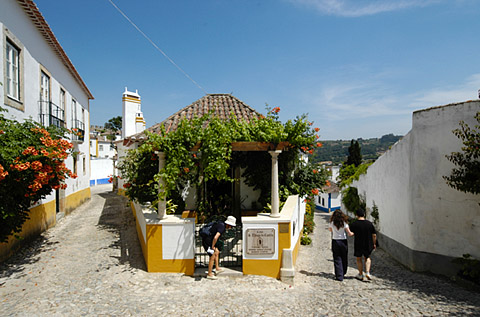 Gorbachev Takes the Solar RouteFormer Soviet president Mikhail Gorbachev called on the G8 nations to establish a $50 billion "global solar fund" to support installation of solar energy plants, with an emphasis on developing nations. Gorbachev spoke on the 20th anniversary of the Chernobyl disaster. He was eyeing the G8 summit in St. Petersburg this July, where global energy security will be among the top concerns.Gorbachev, chairman of Green Cross International (organized to tackle global environmental problems), warned G8 leaders not to relegate renewable energy to a secondary role, behind oil, gas, and nuclear power. He said $50 billion, invested over ten years, could be raised by re-allocating the subsidies given to fossil fuels and nuclear energy. He said, "In the US, for example, direct subsidies to nuclear energy amounted to $115 billion between 1947 and 1999 with a further $145 billion in indirect subsidies. In contrast, subsidies to wind and solar combined during the same period totalled only $5.5 billion." We might ultimately need nuclear power, but Gorbachev is right to emphasize renewable sources for the time being. If combined with an aggressive program to reduce energy consumption, this might obviate the need for further development of nuclear power, with all the risks that entails.
"Gorbachev asks G8 to create solar energy fund"
|
 Mega Mass in BudapestOn this year’s Earth Day (April 22), 32,000 people participated in the Critical Mass bicycle ride in Budapest. Before the event many people thought that it would be impossible to surpass the demonstration of last October, when more than 20,000 persons took part in the ride. The event was organized by 15 cyclist and environmental organizations.As a result of these Critical Mass demonstrations and other forms of pressure from NGOs, the Budapest Municipality accelerated its program of bicycle path constructions, and in May 2006 accepted a very ambitious program for reduction of air pollution which includes all the proposals of the environmental and cyclists organizations, including:
Special to Carfree Times
|
 Just Hang Up and Drive!The city of Montreal will ask the Province of Quebec to outlaw cell phone use by motorists within the city and lower speed limits by 10 km/hr. Montreal is not a friendly town for pedestrians, and these two measures are expected to help improve conditions, especially safety.A proposed "pedestrian charter" was recently unveiled. It is expected to serve as a starting point for reinventing Montreal as a world-class walking city. Supporters are under no illusions: "We are talking about a major shift of culture for a North American city," said Andre Lavallee who helped develop the charter. "Montreal was essentially designed over the years around the needs of the car. Now we must rethink the city around the needs of the pedestrian." The charter proposes other changes besides the cell phone ban and lower speed limits:
"Just hang up and drive
|
Feature Article Letnany, Prague ©2006 J.Crawford Prague Field Test of User DesignJ.H. CrawfordLast summer in Budapest at the Towards Carfree Cities V conference we built a maquette of a carfree district using ordinary potter's clay. This exercise was intended to test the feasibility of morphogenic design and dabble in participatory design. People were quite absorbed by the process, and the results were interesting and rewarding.Following this year's Network Training Meeting at Tábor, we conducted a full-scale test of user design in the field. On Sunday 28 May 2006, a dozen people gathered with me on a site in Prague to test some of the principles I am developing for the next book. Rain and wind appear to have held down attendance, which we had hoped would be closer to 30 or 40 people, but the people who did come were tireless and devoted to the process, which was more frustrating than I had anticipated. We used string and stakes to lay out a carfree neighborhood on grassland site in the shape of a right triangle about 300m (1000') long and 200m (660') wide. We assumed that the point of the triangle would be at the center of a much larger carfree district. We were attempting to lay out about ten blocks housing 900 people on three hectares of land. Each person was assumed to have the right to 2m (6.6') of street frontage in a building four stories tall, giving relatively comfortable space allocations for living and working. Densities would be roughly the same as in the Reference District presented in Carfree Cities.  ©2006 J.Crawford The original intention had been to create groups of four people, each group representing one of the ten blocks to be arranged. It proved impossible to do this with so few people, but we did cut some long lengths of string and tied them into loops. Each loop represented the perimeter of one block and was held at waist height by four people representing that block. The lengths of these strings varied between 100m and 170m (330' and 560'), giving blocks of reasonable size. We were able to attempt the layout of three blocks simultaneously, but it has to be admitted that this did not go very well. Clearly, many more people are required to make this part of the process work. The lack of a sense of scale when so few people are involved gives a poor sense of how big the blocks are or how they relate to other blocks near by. People felt that decisions during this part of the process were rather arbitrary. I agree with this assessment. In this case, the problem was exacerbated by the absence of features on the site that would influence design (notice how the site affects the design of Obidos, above in this issue). It also became clear that the "urban villages" that I have proposed in the book really are not optional. Each urban village would comprise one block. It is now evident that we must first assemble people into intentional villages, then ask these groups to find areas of the site that they like, and only then begin design of the various villages/blocks on the site in a way that suits the needs of all.  ©2006 J.Crawford When the process focused on smaller-scale areas such as squares and the buildings surrounding them, things flowed much more smoothly. People were able to understand immediately how the buildings would fit together and the way in which the shape and size of the spaces affected how they feel. We sat down and had lunch in the square we made, and people agreed that they liked it. Participants even went so far as to decide where certain functions, such as the bakery, ought to be located. Two things somewhat surprised me. First of all, people were willing and even eager to make very narrow streets, down to 2m (6.6') wide. Streets this narrow exist in old cities in large numbers but are almost never laid out today. Car traffic has much to do with this, of course, but emergency access is a more stubborn problem. Japan has coped with this by devising fire engines of a size that can penetrate into the narrowest alleyways, and there really is no reason that this approach could not be adopted in other places. The yearning for narrow streets with non-parallel sides and complex geometry surprised and pleased me. 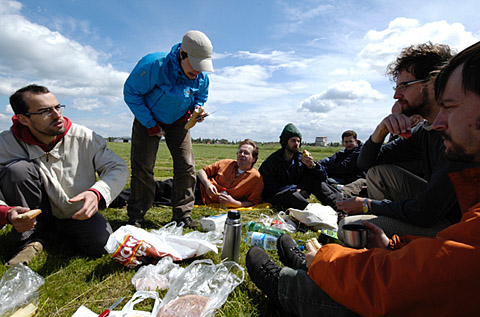 ©2006 J.Crawford The second interesting point was that people were immediately willing to make passages through the interior courtyards that would make them open to the public. In Venice, such a passage is known as a "sottoportego" and is nothing more than a ground-level tunnel through a building into the space behind it. I have tended to assume that people would generally prefer to keep the courtyards closed and private, but, in this group, there was a ready willingness to make three openings into the courtyard at the center of a block. (It should be noted that such arrangements are found in old parts of Prague.) ConclusionsPeople like medieval areas. I have known this for some time, based simply on the fact that a remarkable number of popular tourist areas are in fact the oldest parts of their cities. Newer areas with wide, straight streets, dating mainly from the 17th century onwards, are rarely so popular a destination. People are quite ready to create more areas that resemble the medieval districts they like so much, and there seems to be an intrinsic understanding that small, intimate buildings, streets, and squares are essential to this process.People enjoyed the process itself. They thought that it would tend to start the process of building social cohesion in a new neighborhood. The process was carried out in a spirit of cooperation, although some conflicts must be expected when the process is first applied to a real site, with real streets and buildings at stake. The urban village must become the foundation of user design. It is too much to expect a group of thousands of strangers to assemble into meaningful groups on the same day that a carfree district is laid out. Months of preparation will be required for this. Since the definition of blocks first requires an identification of their residents, it is difficult to see how field design by users can proceed until they have decided how to group themselves after a long process involving careful consideration and probably the striking of compromises. The placement of blocks with respect to one another also requires considerable thought. The temptation will be to do this using at least crude sketches on paper. I would prefer to avoid the use of paper entirely, except once design is complete, and only then to record the results. Perhaps the process of urban village formation should take place on the site itself, with villages gravitating towards areas of the site they like best and which are most suited to their needs and desires. The feasibility of in-the-field design at a smaller scale than the full block does seem to have been demonstrated by this exercise. People understood the issues immediately, and there were no difficulties with scope or scale. I am only concerned that more thought might be needed regarding changes in the feeling of space as comparatively tall buildings are erected alongside quite narrow streets. People might then decide that they wanted their streets a little wider after all. I will be addressing this issue. I will revise Part IV of the book quite extensively to reflect the results of this test. In particular, more stress will be laid on the formation of urban villages. ThanksI would like to thank Ed Beale, Petra Beyerova, Patrick Collins, Linda Drevikovska, Simon Field, Randy Ghent, Markus Heller, Michal Krivohlavek, Petr Kurfurst, Martin Nawrath, Steve von Pohl, and Jakub Smolik for their participation. It was a cool, windy day with occasional hard rain, which makes me all the more grateful for the help.I would also like to thank Jakub Sklenka and Jan Jelinek of CODECO Real Estate Development for making the site available and for assistance in obtaining municipal permission for the exercise.
|
Hot New LinksThe links below will open in a new browser window:
Motorcycles and Bicycles: Debunking Myths Hirsch report on peak oil (Wikipedia) Climate Change is the Major Problem Facing the World by David Attenborough Parking Taxes Evaluating Options and Impacts (VTPI) [PDF!] Evaluating New-Start Transit Program Performance: Comparing Rail And Bus [PDF!] Planning Principles and Practices (VTPI) Summarizes principles and practices of effective land use and transportation planning. [PDF!]
About Carfree Times
Next IssueThe next issue of Carfree Times is scheduled for September or October 2006.
Subscribe to Carfree TimesCarfree Times is published quarterly at Carfree.com. To receive e-mail notices of new issues, please visit the subscription page or send e-mail with the word "Subscribe" in the subject line. We do not share our mailing list.
|
| Editor | J.H. Crawford |
| Send e-mail | |
| URL | http://www.carfree.com/ |
![]()
Back to Carfree.com
Carfree Times Home
Back to Carfree Times Issue 42
Forward to Carfree Times Issue 44
About the book: Carfree Cities
E-mail
carfree.com
Copyright ©2006 J.Crawford

